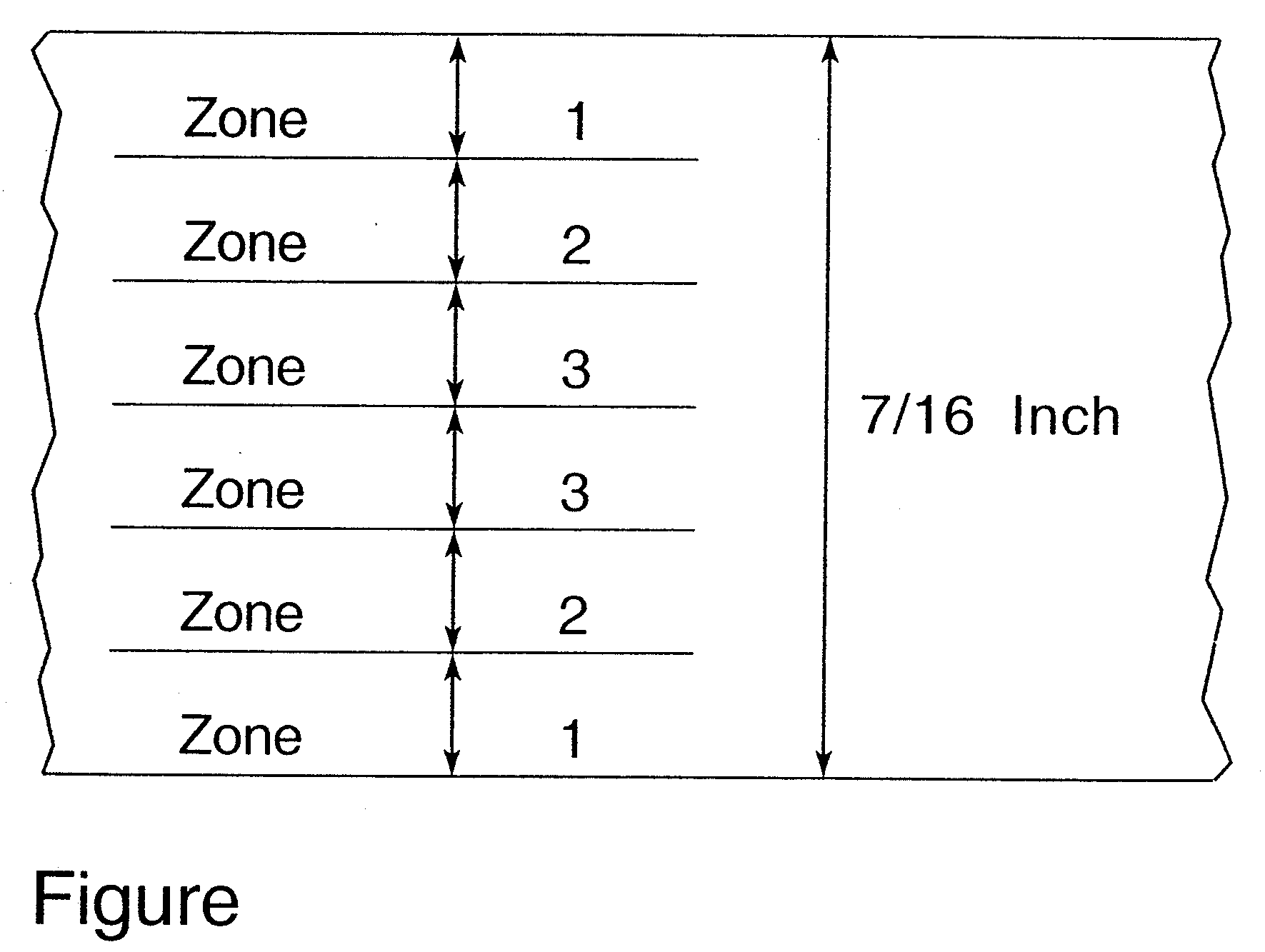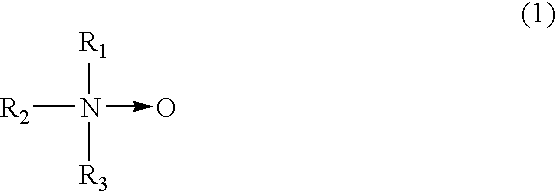Method of Protecting Wood Through Enhanced Penetration of Wood Preservatives and a Related Solution
a preservative and wood technology, applied in wood heating, paints with biocides, manufacturing tools, etc., can solve problems such as environmental undesirable conditions, warping, cracking and checking, and structural defects, and achieve the effects of enhancing penetration, eliminating the redrying step, and enhancing penetration
- Summary
- Abstract
- Description
- Claims
- Application Information
AI Technical Summary
Benefits of technology
Problems solved by technology
Method used
Image
Examples
example 1
[0056]Chemical component mixtures as shown in Table 1 were heated to 60° C. using an in-line recirculating heater. The hot mixtures were stirred until homogenous. Radiata Pine lumber of dimensions approximately 45 mm deep, 90 mm wide and 3,000 mm long were immersed for 1 second in one of the hot mixtures. Before treatment, the Radiata Pine lumber had oven dry moisture content ranging from 9 to 15% by weight; each piece weighed between 4,800 grams and 5,300 grams. The one-second immersion applied between 70 grams and 100 grams of mixture to each piece of lumber. Five pieces of lumber were immersed in mixtures of 50 to 60° C. The mixtures were allowed to cool to 30 to 40° C. before a second set of 5 samples was immersed. After treatment, the lumber was stored for 6 hours. Different treatment sets were separated during storage. After 6 hours at ambient room temperature and humidity, each piece of lumber was stored under Condition #1 shown in Table 1, while the other half was stored und...
example 2
[0058]The chemical component mixtures shown in Table 1 were stirred until homogenous. The temperature of the mixture was 30° C. Aspen and Southern Yellow Pine-oriented Strand Board (OSB) with commercial specifications of “ 7 / 16-inch thickness” heated to 120° to 140° C. was sprayed with the chemical component mixtures. Additional ambient temperature OSB was also sprayed. The spray applied between 30 and 35 grams of mixture per 1,000 square centimeters of OSB. After the spray was applied, the OSB was stacked. The stacks gradually cooled to room temperature after 24 hours. The OSB board was cut into three depth zones according to FIGURE. Each cut face was tested for the presence of borate buffer using the standard curcumin test. Samples of zones that tested positive for borate buffer were grouped up in a Wylie mill. Ground sample was analyzed for iodine to determine the concentration of IPBC fungicide using an x-ray fluorescence spectrometer. Ground sample was also extracted and then a...
PUM
| Property | Measurement | Unit |
|---|---|---|
| weight percent | aaaaa | aaaaa |
| weight percent | aaaaa | aaaaa |
| weight percent | aaaaa | aaaaa |
Abstract
Description
Claims
Application Information
 Login to View More
Login to View More - R&D
- Intellectual Property
- Life Sciences
- Materials
- Tech Scout
- Unparalleled Data Quality
- Higher Quality Content
- 60% Fewer Hallucinations
Browse by: Latest US Patents, China's latest patents, Technical Efficacy Thesaurus, Application Domain, Technology Topic, Popular Technical Reports.
© 2025 PatSnap. All rights reserved.Legal|Privacy policy|Modern Slavery Act Transparency Statement|Sitemap|About US| Contact US: help@patsnap.com


